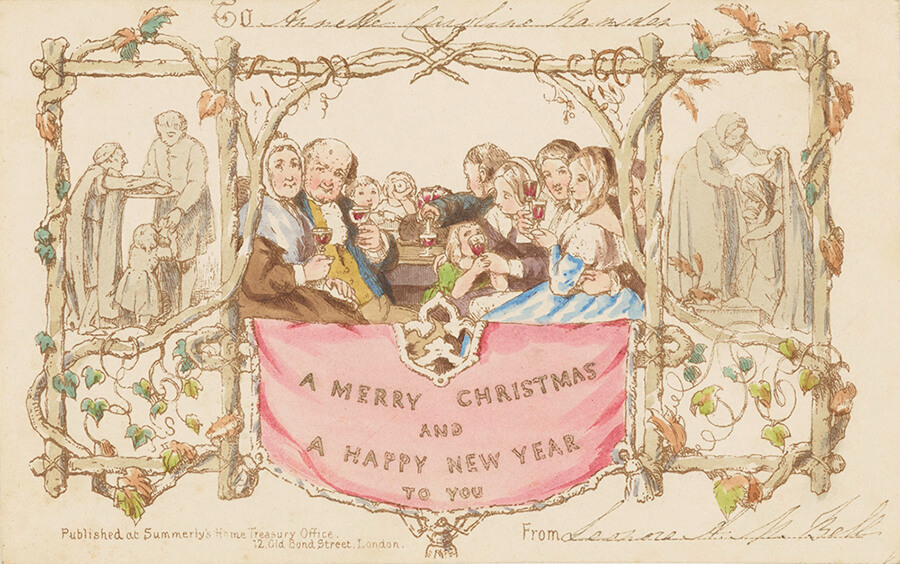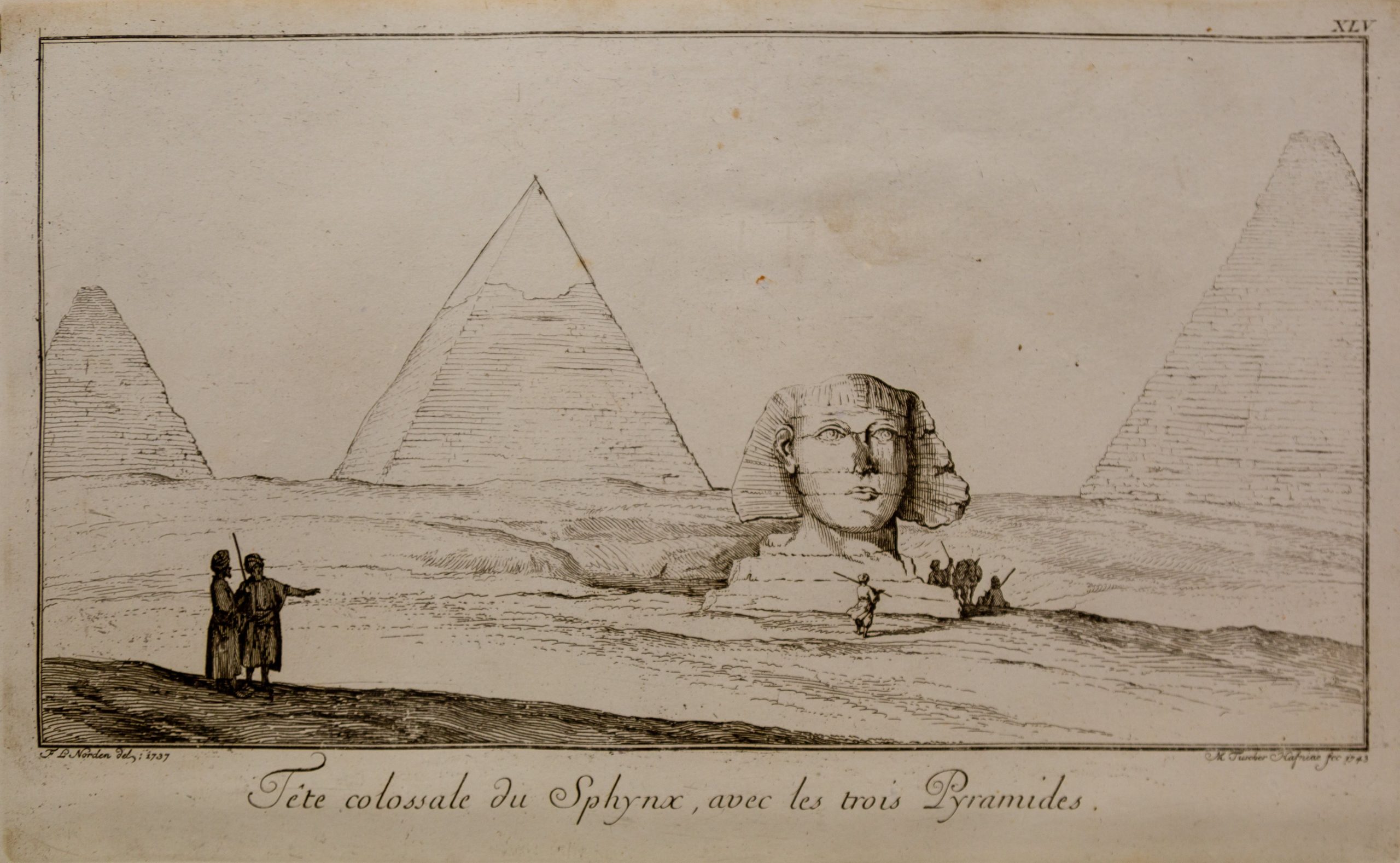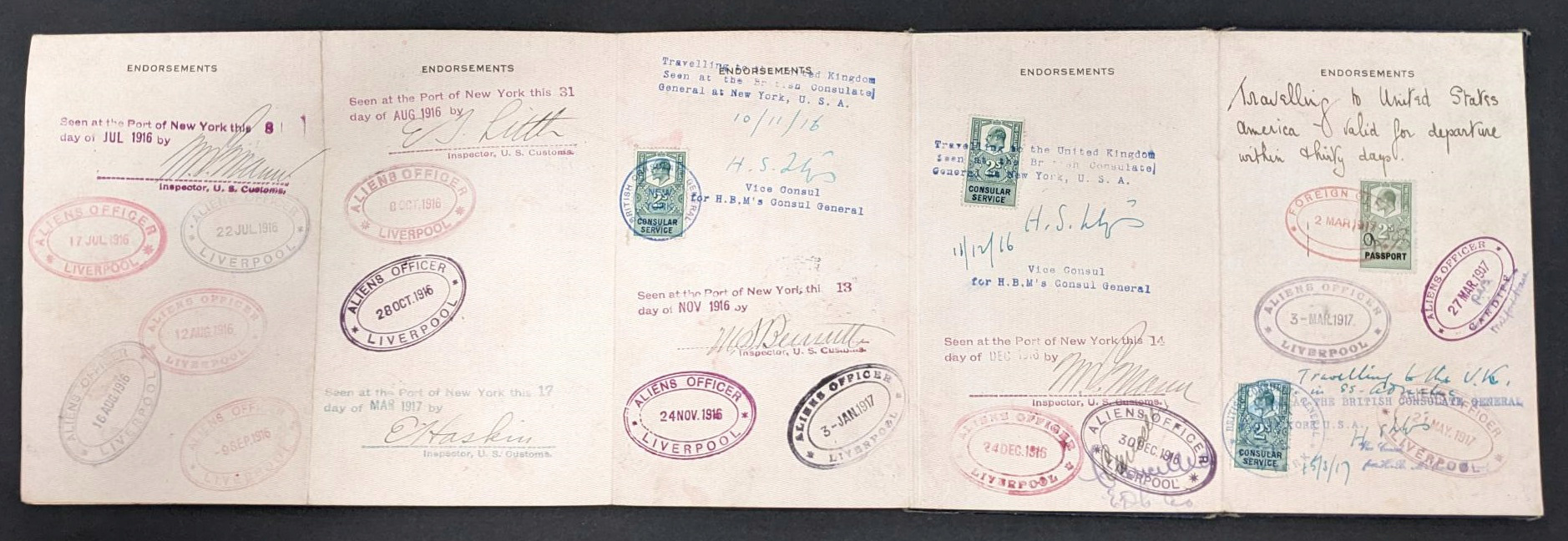The fascinating history behind the cherished British Christmas cards and postage; an overview of the Postal Museum’s archive collections.
The first Christmas card
Like many Christmas traditions, Christmas cards date from the Victorian era, Queen Victoria sent the first official Christmas card. Sir Henry Cole commissioned the first commercial Christmas card in 1843 with an initial print run of 1000 cards. Sir Henry Cole was amongst other things assistant to Sir Rowland Hill in the introduction of the penny post. He was also the first Director of the Victoria & Albert museum.
Designed by painter John Callcott Horsley, the first cards were printed lithographically and then hand-coloured by the professional colourer Mason.

Horsley’s design depicts two acts of charity – “feeding the hungry” and “clothing the naked”. It also shows a family party scene, in which three generations are drinking wine to celebrate the season. The depiction of children drinking wine proved to be controversial as this was an era when the temperance movement was gaining in popularity in the UK. Nonetheless this did not stop people buying the cards and more were printed to satisfy demand.
Christmas post during wartime
At the outbreak of the Second World War in 1939, the General Post Office (GPO) controlled virtually all civil communications channels: mail, telephone and telegram. The country truly depended on the GPO. The continuation of its services was essential for friends and loved ones to keep in touch especially at Christmastime. However, the WWII brought many disruptions to the GPO which put great strain on the service and its employees.
Many skilled workers left the GPO for military service. Bombings destroyed postal buildings and posed a great danger to postal workers too. Furthermore, the extensive bombing of homes disrupted delivery. Many of the addresses mail was to be delivered to simply no longer existed on the street.

In December 1940 the Post Office asked its male workers in London to bring along their ‘wives, sweethearts, sisters and lady friends’ to help deliver Christmas mail. Subsequently, thousands of women turned up at the local post offices and employment exchanges, eager to be put to work. By Christmas 1940, the GPO employed women to drive mail vans for the very first time, a job normally reserved for men only.
Around Christmas 1941, post early campaigns again urged the public to get their mail sent with plenty of time. Alongside the regular ‘post early’ posters, the GPO produced another film, encouraging ‘the British public everywhere’ to ‘post now for Christmas and save transport for the war effort.’

The Post Office’s ‘too successful’ campaign
From the 1930s until the 1960s the Post Office ran its annual ‘Post early’ campaign. It encouraged people to send their letters and parcels as early as possible. This was to avoid a rush in the week leading up to Christmas.
Its Public Relations Department commissioned famous national and international artists. They produced eye-catching posters for display in post offices, on pillar boxes and telephone kiosks, on mail vans and in shop windows.

The campaign, however, had become a victim of its own success. Over the years the volume of Christmas mail increased so much the sorting office staff could not cope anymore.
It was suggested that it would be beneficial if the emphasis of future Christmas campaigns could be changed. In 1969 the famous slogan was phased out. It was replaced with a less proactive one stating simply: ‘Don’t miss the Christmas post’.

The Postal Museum houses over 6,000 posters, as well as original poster artwork. Dating from the 1930s, the collection continues to grow with new posters advertising services arriving regularly. Striking designs can be bought online.
Written by the Postal Museum team, including Joanna Espin (curator).
Special thanks to Mathilde Jourdan and Gavin McGuffie.
Edited by Isabel Lauterjung.






